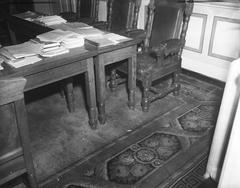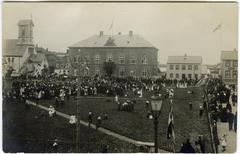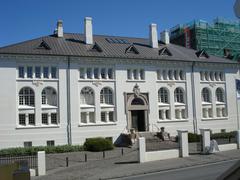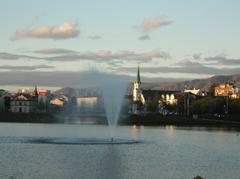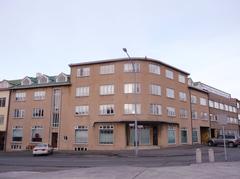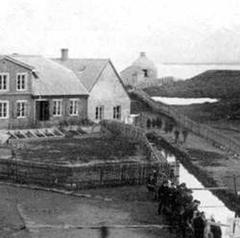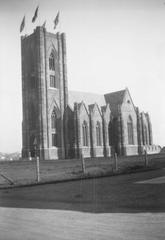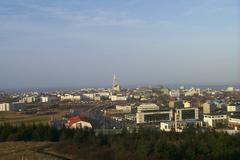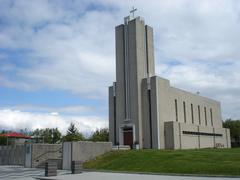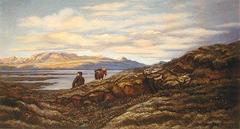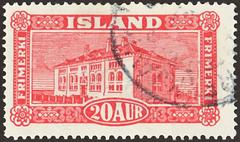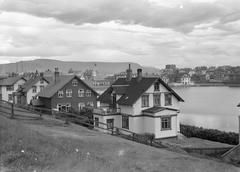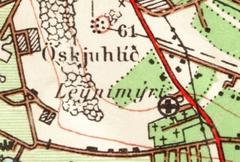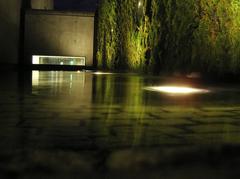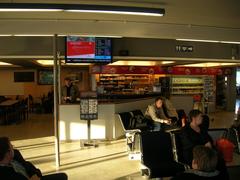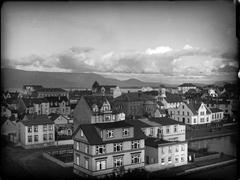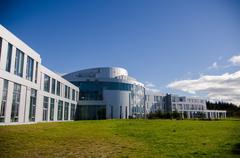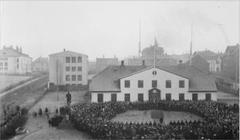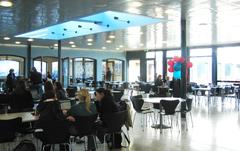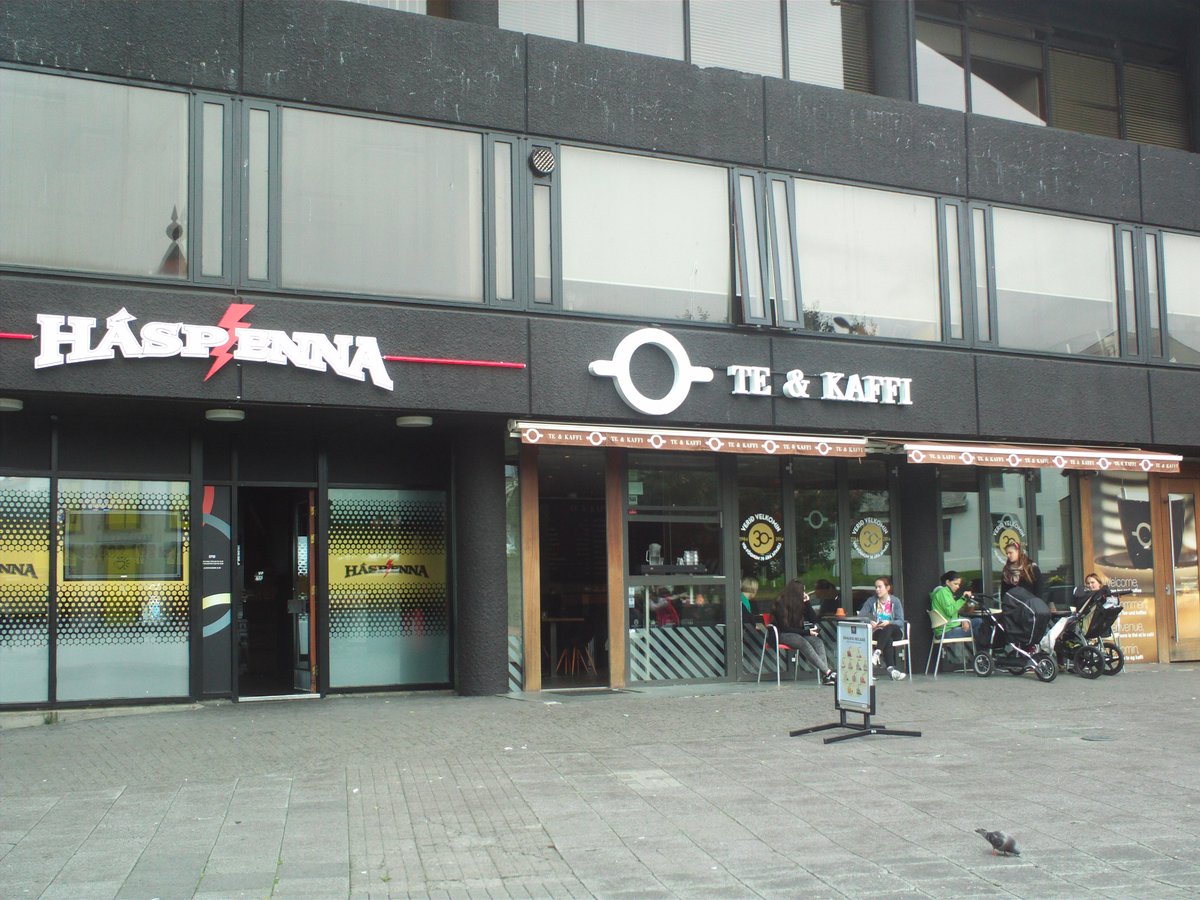
Lækjartorg Reykjavík: Visiting Hours, Tickets, and Historical Sites Guide
Date: 04/07/2025
Introduction
Lækjartorg, meaning “Stream Square,” is one of Reykjavík’s most iconic and historically significant public squares. Nestled in the heart of Iceland’s capital, it offers a unique perspective on the city’s evolution from a modest settlement defined by waterways to a thriving urban and cultural hub. Today, Lækjartorg stands as a vibrant gathering place—blending historical significance, modern design, and community life. Whether you are a history enthusiast, culture lover, urban explorer, or simply looking to enjoy Reykjavík’s lively atmosphere, Lækjartorg is an essential stop.
Table of Contents
- Early Origins and Geographic Context
- Urban Development: 18th–20th Century
- Political, Cultural, and Social Significance
- Architectural Evolution and Urban Design
- Practical Visitor Information
- Nearby Attractions and Experiences
- Events and Festivals
- Responsible Tourism and Sustainability
- Frequently Asked Questions (FAQ)
- Summary and Conclusion
- Sources
Early Origins and Geographic Context
Lækjartorg occupies a central site at the confluence of several key streets in downtown Reykjavík. Its name, “Stream Square,” refers to the small stream that once flowed from Tjörnin pond to the sea, shaping early settlement patterns and providing essential resources for the city’s first inhabitants (Reykjavík City Journal). Reykjavík’s history dates back to 874 AD with the arrival of Ingólfur Arnarson, Iceland’s first permanent settler, though the area around Lækjartorg remained rural for centuries.
Urban Development: 18th–20th Century
Reykjavík’s transition from rural outpost to urban center began in the mid-18th century. Skúli Magnússon, known as “the father of Reykjavík,” established industrial enterprises in the area in 1752, and the city was officially designated a trading town in 1786 (Reykjavík City Journal). Lækjartorg quickly became a focal point for trade and civic activity. By the 19th century, it served as a bustling marketplace and meeting place for local residents.
The stream that once defined the square’s landscape was enclosed in 1911 to accommodate the city’s rapid urbanization and modern roadways (Guide to Iceland). The area’s historical fabric was preserved despite proposals for major roadways in the late 20th century, and today, Lækjartorg is surrounded by a mix of historic and modern buildings, reflecting Reykjavík’s evolving urban character (Karres en Brands).
Political, Cultural, and Social Significance
Lækjartorg has long been a symbolic and functional stage for Reykjavík’s civic life. Its centrality made it a key venue for public gatherings, demonstrations, and celebrations—particularly during the Icelandic independence movement and the reinstatement of Alþingi in 1845 (World Landscape Architect). The square remains a venue for democratic expression, festivals, and cultural events.
Surrounding Lækjartorg are major political and educational landmarks, including the Reykjavík District Court, the Prime Minister’s Office (originally built as a prison in the 18th century), and the historic Reykjavík Junior College (Icelandic Times; Guide to Iceland).
Architectural Evolution and Urban Design
Lækjartorg’s architecture reflects the city’s mix of tradition and innovation. Colorful corrugated iron houses stand alongside sleek contemporary buildings. Recent revitalization efforts—such as the award-winning “Civic Hot Spring” project—have introduced innovative urban elements like “The Halo,” an installation providing wind protection and harnessing geothermal heat for year-round comfort (Karres en Brands). These features create a welcoming “climate oasis,” blending green spaces, public art, and sustainability.
Public art installations, including the whimsical Black Cone sculpture and frequent contemporary murals, contribute to the square’s vibrant atmosphere (Wanderlicious).
Practical Visitor Information
Visiting Hours
Lækjartorg is an open public square accessible 24/7, year-round. There are no restrictions on entry hours.
Tickets and Accessibility
- Entry: Free and open to all—no ticket required.
- Accessibility: The square is wheelchair accessible with smooth pavements and curb cuts. Nearby public transport stops are also accessible, and mobility equipment rentals are available in the city center (Lonely Planet).
Travel Tips
- Getting There: Lækjartorg is centrally located and reached easily by foot, bus (lines 1, 3, 6 stop nearby), or bicycle. Parking is limited, so public transport or walking is recommended (Evendo).
- Weather: Reykjavík’s weather is variable; dress in layers and bring waterproof clothing.
- Facilities: Public restrooms are available at Reykjavík City Hall (5 minutes away). Free Wi-Fi covers much of downtown.
- Payments: Credit and debit cards are widely accepted.
Guided Tours and Photographic Spots
Many guided walking tours of Reykjavík include Lækjartorg, focusing on history, urban design, and folklore. The square itself and its surrounding streets offer excellent photo opportunities, especially during events and with views of nearby landmarks.
Nearby Attractions and Experiences
Lækjartorg’s central location makes it the perfect starting point for exploring Reykjavík:
- Harpa Concert Hall: Renowned for its geometric glass façade and cultural events.
- Tjörnin Pond: A tranquil spot for birdwatching and relaxation.
- Laugavegur & Skólavörðustígur (Rainbow Street): Main shopping and dining streets, featuring boutiques, bakeries, and street art.
- Reykjavík City Hall: Modern architecture and a giant 3D map of Iceland.
- Reykjavík Art Museum & Settlement Exhibition: Learn about Viking history and contemporary art.
- Kolaportið Flea Market: Iceland’s largest indoor market, open on weekends.
For extended exploration, consider visiting Perlan (observation deck and nature museum), Sky Lagoon (geothermal spa), or Viðey Island (accessible by ferry) (Iceland Review).
Events and Festivals
Lækjartorg hosts some of Reykjavík’s most important public events:
- National Day (June 17): Parades, concerts, and family activities.
- Culture Night (Menningarnótt): August festival with city-wide art, music, and performances.
- Christmas Markets and Yule Cat Sculpture: Festive lights and seasonal stalls in December.
Summer months bring outdoor concerts and food markets, while winter features illuminated decorations and a cozy atmosphere (Lonely Planet).
Responsible Tourism and Sustainability
Reykjavík is committed to sustainability. Public transport is eco-friendly, and Lækjartorg’s design incorporates climate adaptation and green practices. Visitors are encouraged to recycle, use reusable water bottles, support local businesses, and respect the square as both a tourist attraction and a living part of the city (visiticeland.com).
Frequently Asked Questions (FAQ)
Q: What are the visiting hours for Lækjartorg?
A: Lækjartorg is open 24/7, year-round.
Q: Is there an entry fee or do I need tickets?
A: No, the square is free and open to all. Some events or tours nearby may require tickets.
Q: Is Lækjartorg wheelchair accessible?
A: Yes, the square and surrounding streets are accessible.
Q: Are guided tours available?
A: Yes, many walking tours include Lækjartorg. Check with local operators.
Q: What’s the best time to visit?
A: Summer offers lively festivals and events; winter features a festive, illuminated atmosphere.
Q: What are the safety tips?
A: Reykjavík is very safe, but take care of your belongings during crowded events.
Summary
Lækjartorg is a vibrant hub where Reykjavík’s history, culture, and community intersect. Its accessibility, central location, and year-round events make it an essential destination for visitors. From the square’s historic roots and political landmarks to its modern urban design and lively festivals, Lækjartorg offers an authentic Icelandic experience. Plan your visit with these tips, explore nearby attractions, and immerse yourself in the dynamic atmosphere of Reykjavík’s heart.
For up-to-date event information, guided tours, and insider tips, download the Audiala app and follow us on social media.
Sources
- A brief history of Reykjavík, 2025, Reykjavík City Journal
- 101 Lækjargata, 2025, Icelandic Times
- Winners of Lækjartorg City Square Competition Announced, 2025, World Landscape Architect
- Lækjartorg City Square Project, 2025, Karres en Brands
- A City Guide to Reykjavík, Iceland, 2025, Iceland Review
- Guide to Reykjavík, 2025, Lonely Planet
- Visiting Lækjartorg Square, 2025, Guide to Iceland


